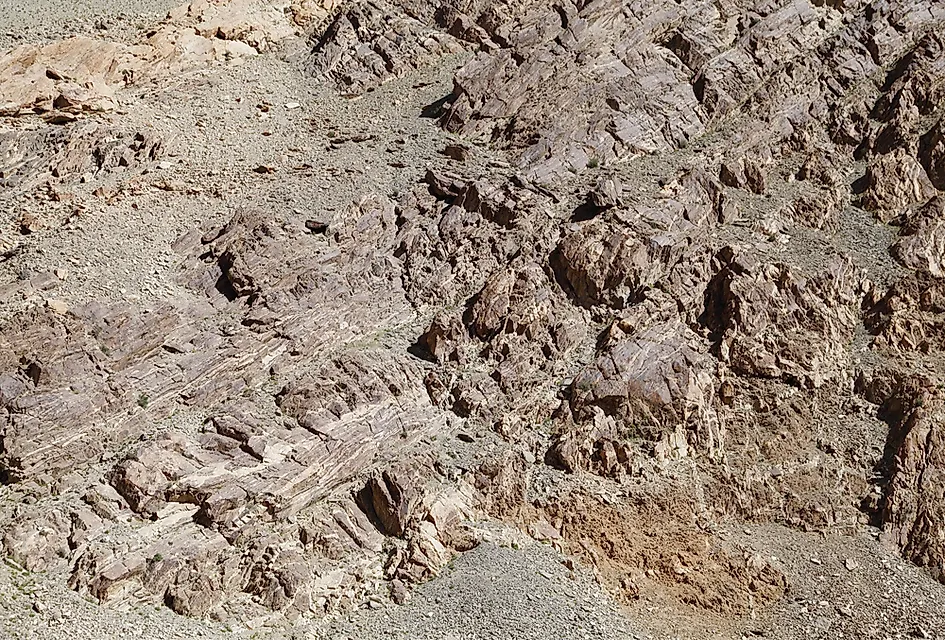What Is an Ophiolite?

What Is an Ophiolite?
An ophiolite is a part of the Earth’s oceanic crust that is uplifted and exposed above sea level. Geologists first observed ophiolites in the European Alps. In 1821, Alexandre Brongniart used the name “ophiolite” to refer to an assemblage of green rocks that had serpentinite features on it. 150 years later, during the advent of plate tectonics, researchers adopted the name ophiolites to refer to the pieces of oceanic crusts attached to the continents. Ophiolites are important to geologists since they occur within mountain belts like the Himalayas and Alps, and help in identifying former ocean basins and are the center of the plate tectonic theory. The formation of the ophiolites did not occur all at once, but rather in intervals.
Components of an Ophiolite
Ophiolites contain several layers of rocks. These layers, from the base to the top, include tectonized and cumulate peridotites, layered and massive gabbro, dikes, basaltic lavas, and volcanic rocks. The entire sequence of ophiolite layers is about 15 km thick. The materials that make the peridotite found at the base of the ophiolites is harzburgite rock. The dikes and volcanic rocks that form the cap of ophiolites result from the eruptions that occur on the ocean floor.
Ophiolite Groups and Assemblages
Two broad categories of ophiolites exist: Cordilleran and Tethyan. Cordilleran ophiolites form in the mountain belts of the Cordillera (which is the name given to western North America). Their locations include subduction zones and have no relation to the passive continental margins. Examples of the Cordilleran ophiolites include the Josephine ophiolite found in the Klamath Mountains in Oregon and California, and in the southern Andes of South America. Tethyan ophiolites appear near the eastern Mediterranean Sea, and examples include Semail in Oman and the Troodos in Cyprus. Ophiolite assemblages form during rifting and continental drifts, rather than the result of subduction. Assemblages position themselves within continental margins when ocean basins close.
Origin of Ophiolites
Several theories attempt to explain the origin of ophiolites. One theory suggests they are formed as ocean lithosphere. Researchers proved this theory by studying a an ophiolite complex in the Bay of Islands, Newfoundland. The study revealed that ophiolitic and oceanic velocity structures were indeed identical. Hence, this proved that ophiolites originated as ocean crusts. The second theory believes that ophiolites resulted from the tip of a subduction’s forearc that elevated itself by compression and detachment.
Typical Ophiolites and Where to Find Them?
Examples of areas that have ophiolites include Oman, California, New Guinea, Cyprus, and Newfoundland. The Samail ophiolite in southeastern Oman has been studied the most by researchers. Furthermore, some popular ophiolites include: Macquarie Island and Tasmania (Australia); Yakuno, Poroshiri, and Horokanai (Japan); and the Zambales ophiolite complex (Philippines).











